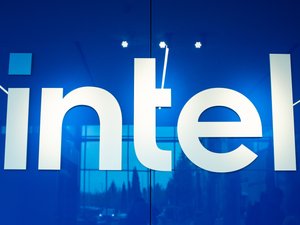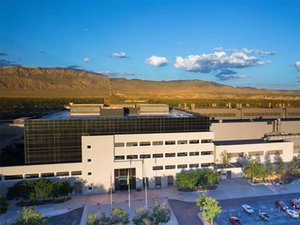
Sandia National Laboratories and the University of New Mexico have been tapped as members of a regional collaborative hub to drive microelectronics education, research and development that's backed by nearly $40 million in federal CHIPS and Science Act funding.
The U.S. Department of Defense on Wednesday announced it awarded $238 million in Creating Helpful Incentives to Produce Semiconductors (CHIPS) and Science Act funding to eight recipients nationwide to establish regional innovation hubs through what's known as the Microelectronics Commons program. Arizona State University landed a $39.8 million federal grant to lead the Southwest Advanced Prototyping (SWAP) Hub.
Sandia and the University of New Mexico (UNM) are two of the 27 hub members, which also include the University of Colorado Boulder and a slew of private sector firms, according to a news release from the office of U.S Sen. Martin Heinrich (D-N.M.). The Commons program, which includes over 360 organizations from more than 30 states across the country, is intended to scale semiconductor technology and expand workforce needed in the sector by building partnerships in research and development, manufacturing and government.
"This historic endeavor will bring together the brightest minds in academia, at national laboratories and the defense and private sectors in the Southwest to collaborate on leading microelectronic innovation," Heinrich said in a statement. "New Mexico prides itself on our diverse and driven workforce, and we are eager to play a key role in revitalizing U.S. leadership in semiconductor manufacturing and innovation with these major new investments."
Hubs to focus on US military microchips
With a total of $2 billion in federal funding through 2027, the Microelectronics Commons program aims to leverage the eight hubs to accelerate domestic hardware prototyping and "lab-to-fab" transition of semiconductor technologies to mitigate supply chain risks and expedite access to cutting-edge microchips for the military, according to the Department of Defense.
The hubs will be advancing technology in the following areas: secure edge/Internet of Things computing; 5G/6G wireless; artificial intelligence hardware; quantum technology; electromagnetic warfare and commercial leap-ahead technologies.
The Department of Defense said funding for the regional innovation hubs marks the largest award to date under the CHIPS Act.
"The Microelectronics Commons is focused on bridging and accelerating the 'lab-to-fab' transition, that infamous valley of death between research and development and production," Kathleen Hicks, U.S. Deputy Secretary of Defense, said during a Pentagon briefing on Wednesday. "While America is a world leader in the innovative research and design of microelectronics, we’ve lagged in the ability to prototype, manufacture and produce them at scale. That’s what the CHIPS Act is meant to supercharge."
Growth in New Mexico's microelectronics and semiconductor sector
Intel Corp. (Nasdaq: INTC), the global semiconductor giant, has planned a $3.5 billion upgrade to its 218-acre Rio Rancho campus, aimed at preparing the facility for advanced packaging manufacturing. The company brought on a new customer in Israeli manufacturer Tower Semiconductor earlier this month in a move that will make use of tools Intel has in place in the state.
The semiconductor giant also recently returned to profitability, as reported during its Q2 earnings call, and has been on a hiring spree in the state. But other companies are driving innovation in the semiconductor space, as well.
New Mexico's largest venture funding round so far this year went to 3D Glass Solutions Inc., an Albuquerque-based firm with a unique chip manufacturing technology that uses photosensitive glass ceramic wafers. The $30 million in venture capital will enable 3D Glass Solutions to increase its fabrication capacity to more than 24,000 wafers per year, CEO Babu Mandava told Albuquerque Business First when the raise was announced in mid-April.
Mandava told Business First in a follow-up interview in late April that 3D Glass Solutions has around 100 customers for its glass-fabricated chips "in the pipeline" currently and could end up raising more money in a few years if the company wants to speed up its scaling.
"Our goal is to make glass the predominant choice — because it has the potential — for advanced packaging," he said during the interview. "We want to innovate here from multiple verticals to be the supplier of choice for these customers and these markets with what we provide."









